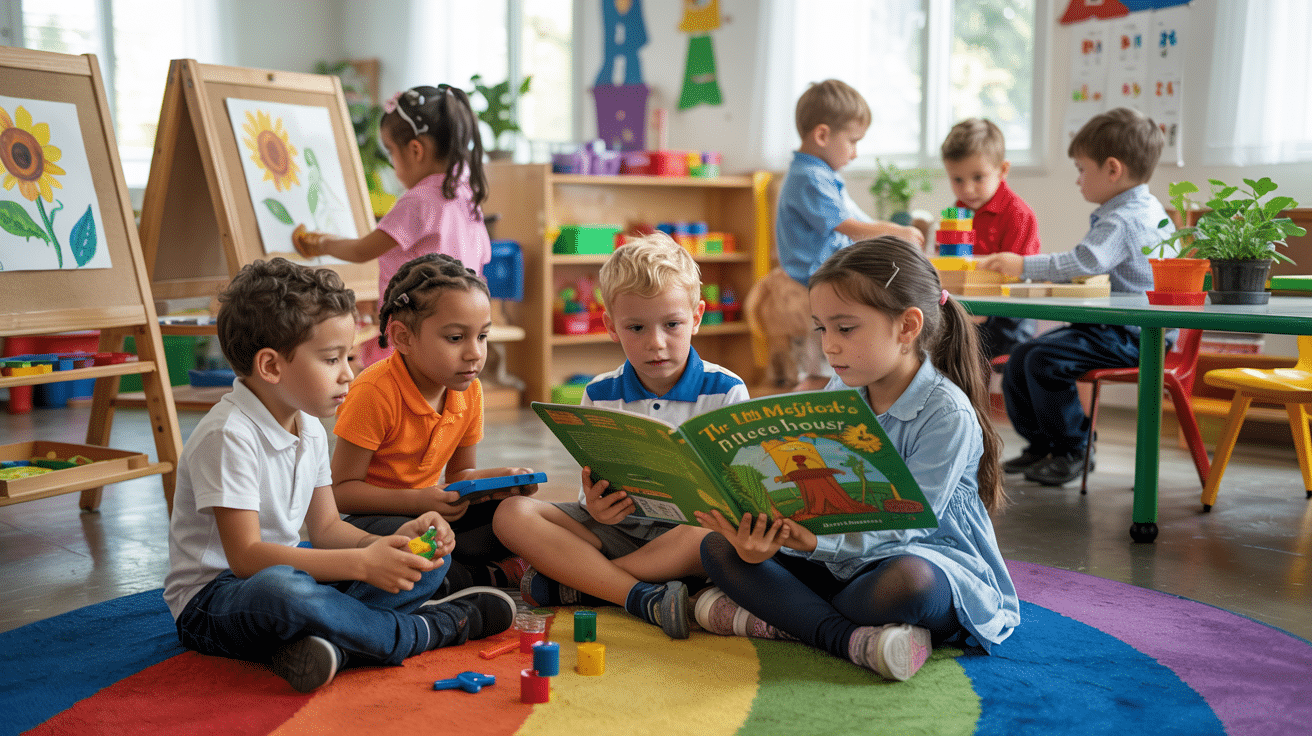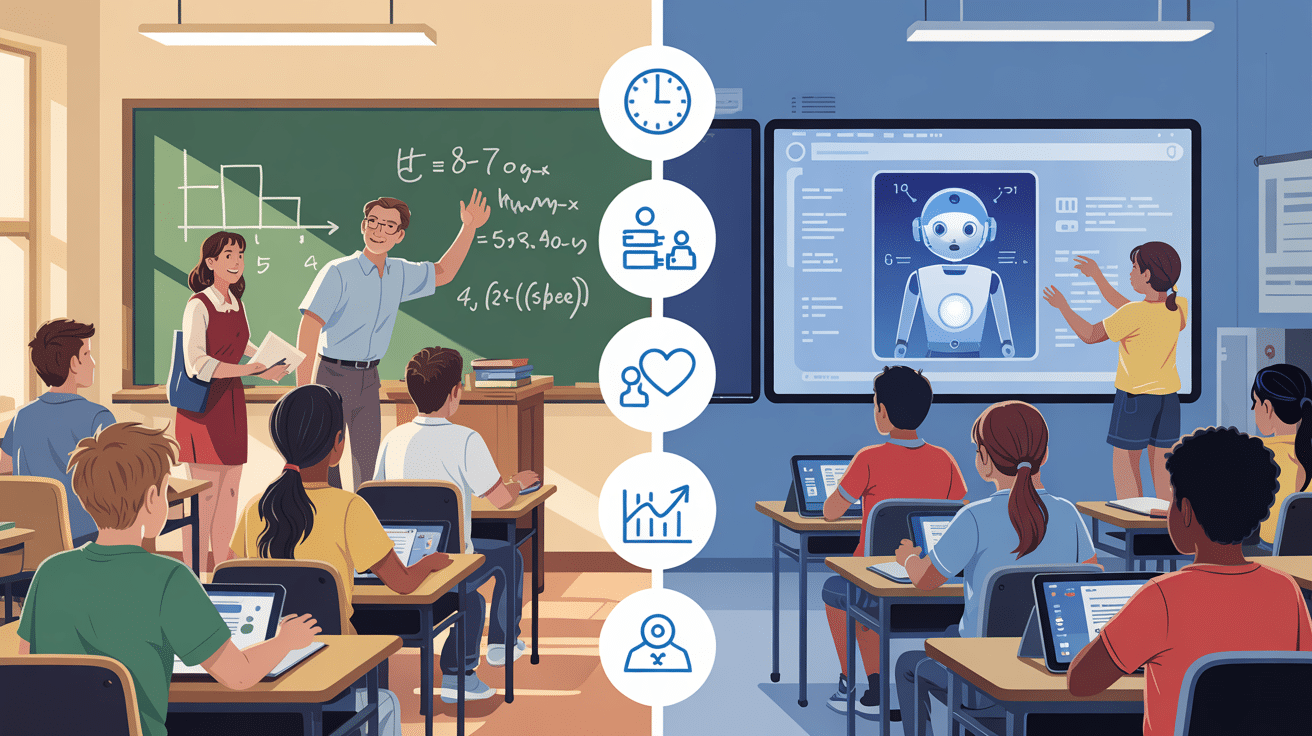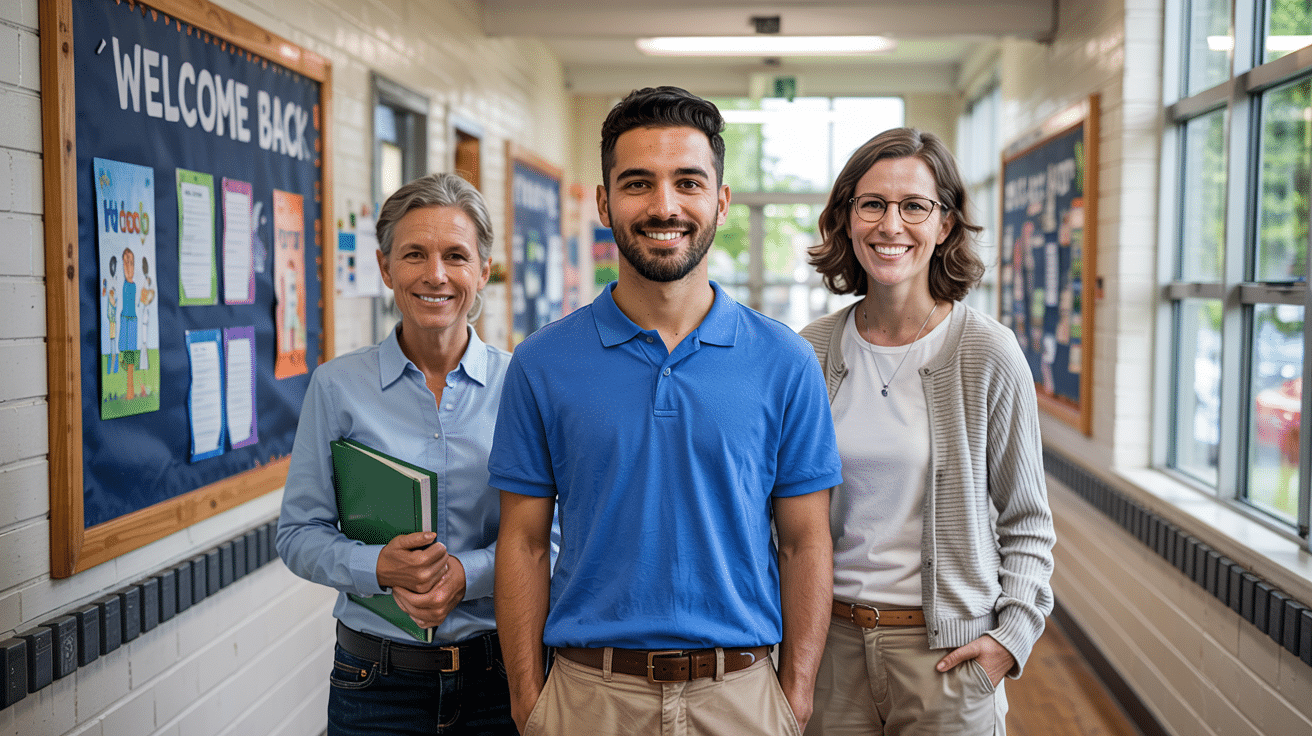Substitute teachers face a tough job. They walk into classrooms filled with students they don’t know, and they need to keep them engaged and learning. Many subs find this task hard and stressful.
But what if you could turn these classes into fun moments that students will remember? With the right set of classroom activities, you can change a dull day into an active and engaging learning session.
This guide offers simple yet effective activities that any substitute can use. These ideas are applicable across grade levels and subjects, requiring minimal to no preparation.
Ready to make your next sub day a success? Let’s explore some simple activities for substitute teachers to keep students engaged and on task while you’re in charge.
The Classroom Heroes: Why Substitutes Matter

Substitute teachers step into classrooms with little notice and must quickly build trust with students they’ve never met. They face unique tests each day, from finding lesson plans to learning school rules on the spot.
These teachers keep learning on track when regular staff are unavailable. Without them, schools would struggle to maintain student progress and daily routines. They bring fresh teaching styles and new energy to classrooms.
Good substitutes do more than watch students; they teach, guide, and inspire.
They turn what could be wasted days into real learning chances. Their ability to handle new classes and topics demonstrates genuine teaching talent.
Schools work best when they value these flexible, ready-for-anything educators.
Classroom Success Kit: Activities for Substitute Teachers
Walking into a classroom as a substitute teacher can feel like stepping onto an unfamiliar stage. You need activities that work instantly, require minimal setup, and keep students engaged.
This collection provides tested activities for substitute teachers across all grade levels, suitable for use with minimal to no preparation.
From quick ice breakers to meaningful learning tasks, these activities help you turn unexpected teaching days into valuable educational experiences.
Building the Base: Activities for Elementary (Grades 1–5)

1. Icebreaker Games
- Materials Needed: None, just an open space in the classroom.
- How to Play: Students sit in a circle and take turns sharing their name and one thing they like.
- Learning Objectives: Students practice speaking skills and learn about their classmates.
2. Phonics Fun with Short Vowels
- Materials Needed: Paper, pencils, and a list of short vowel words.
- How to Play: Students sort words into groups based on their short vowel sounds.
- Learning Objectives: Students build phonics skills and word recognition.
3. Storytelling with Visual Prompts
- Materials Needed: Picture cards or images from books.
- How to Play: Students create short stories based on the images they see.
- Learning Objectives: Students develop creative thinking and storytelling skills.
4. Time Fillers for Math
- Materials Needed: Basic number charts and counting objects.
- How to Play: Students do quick math challenges like counting by 2s or 5s.
- Learning Objectives: Students practice mental math and number patterns.
5. Fun Trivia
- Materials Needed: List of age-suitable trivia questions on various topics.
- How to Play: Split the class into teams and ask questions, giving points for correct answers.
- Learning Objectives: Students recall facts and work together as teams.
6. Guess the Sound Game
- Materials Needed: Audio clips of common sounds or items to make sounds.
- How to Play: Play sounds and have students guess what they are hearing.
- Learning Objectives: Students practice active listening and sound recognition.
7. Cursive Letter Recognition Worksheet
- Materials Needed: Printed worksheets with cursive letters and practice space.
- How to Play: Students match print letters to cursive forms and practice writing them.
- Learning Objectives: Students learn to read and write in cursive style.
8. End-of-the-Day Classroom Games
- Materials Needed: None required, just classroom space.
- How to Play: Simple games like Simon Says or Heads Up, Seven Up.
- Learning Objectives: Students follow directions and practice good sportsmanship.
9. Math Jokes
- Materials Needed: A list of age-appropriate math jokes and riddles.
- How to Play: Share jokes and have students explain why they’re funny.
- Learning Objectives: Students connect math concepts to humor and word play.
10. Art Project: Collaborative Drawing
- Materials Needed: Large sheets and colored markers.
- How to Play: Students add to a group drawing, with each adding one element.
- Learning Objectives: Students practice teamwork and creative expression.
11. Making Paper Airplanes and Testing Speed
- Materials Needed: Paper, measuring tape, timer, and open space.
- How to Play: Students fold paper planes, then test and measure how far they fly.
- Learning Objectives: Students learn the basics of physics and practice measurement skills.
12. Creative Writing Prompts
- Materials Needed: Writing prompts list, paper, and pencils.
- How to Play: Students select a prompt and write a short story for 15-20 minutes.
- Learning Objectives: Students practice creative writing and story structure.
13. Brain Teasers
- Materials Needed: Age-appropriate brain teasers and puzzles.
- How to Play: Students work alone or in pairs to solve thinking challenges.
- Learning Objectives: Students develop problem-solving and logical thinking.
14. Reading Aloud with Comprehension Questions
- Materials Needed: Short stories and prepared questions.
- How to Play: Read aloud to students, then ask questions about the story.
- Learning Objectives: Students practice listening and reading comprehension.
15. Classroom Scavenger Hunt
- Materials Needed: List of items to find in the classroom.
- How to Play: Students search for items on their list, checking them off when found.
- Learning Objectives: Students practice following directions and observation skills.
16. Memory Matching Game
- Materials Needed: Sets of matching cards with words or pictures.
- How to Play: Cards are placed face down, and students flip two at a time to find matches.
- Learning Objectives: Students practice memory skills and pattern recognition.
17. Class Talent Show
- Materials Needed: Open space and any props students might need.
- How to Play: Students sign up to share a talent, skill, or interest with the class.
- Learning Objectives: Students build confidence in public speaking and self-expression.
Developing Skills: Activities for Middle School (Grades 6–8)

18. Debate Topics
- Materials Needed: A list of age-suitable debate topics and a timer.
- How to Play: Students form teams to argue for or against topics with time limits.
- Learning Objectives: Students practice logic, public speaking, and critical thinking.
19. Essay Transition Word Practice
- Materials Needed: List of transition words and writing prompts.
- How to Play: Students practice using transition words in short paragraph writing.
- Learning Objectives: Students improve writing flow and paragraph structure.
20. Pictionary
- Materials Needed: Whiteboard or paper, markers, and word cards.
- How to Play: Students draw words while team members guess what they’re drawing.
- Learning Objectives: Students practice visual communication and vocabulary skills.
21. Collaborative Story Writing
- Materials Needed: Paper and pencils or digital devices.
- How to Play: Each student writes a paragraph, then passes it on for continuation.
- Learning Objectives: Students practice narrative writing and story development.
22. “What Would You Do?” Scenarios
- Materials Needed: List of ethical situations or dilemmas.
- How to Play: Students discuss how they would handle tough choices.
- Learning Objectives: Students develop ethical reasoning and perspective-taking.
23. Create Your Own Quiz
- Materials Needed: Paper, pencils, and subject resource materials.
- How to Play: Students create quiz questions on a topic, then swap and answer others’ quizzes.
- Learning Objectives: Students review subject matter and learn to form good questions.
24. Trivia Challenge
- Materials Needed: Subject-specific trivia questions.
- How to Play: Host a quiz-show style game with teams competing for points.
- Learning Objectives: Students recall subject knowledge and practice teamwork.
25. Book Report: Quick Summaries
- Materials Needed: Paper and pencils.
- How to Play: Students write short summaries of books they’ve read recently.
- Learning Objectives: Students practice summarizing and reviewing reading material.
Preparing for the Future: High School Activities (Grades 9–12)

26. Create a Resume Workshop
- Materials Needed: Sample resumes, paper, and pencils.
- How to Play: Students draft personal resumes with guidance on format and content.
- Learning Objectives: Students learn job application skills and self-presentation.
27. Time Management Workshop
- Materials Needed: Weekly planners or planning templates.
- How to Play: Students create time management plans for upcoming projects.
- Learning Objectives: Students develop planning and organizational skills.
28. Short Story Writing
- Materials Needed: Writing prompts and paper.
- How to Play: Students write brief stories with clear beginnings, middles, and ends.
- Learning Objectives: Students practice narrative structure and creative writing.
29. Group Discussions on Current Events
- Materials Needed: Recent news articles or topics list.
- How to Play: Students form groups to discuss and analyze news events with facts and opinions.
- Learning Objectives: Students develop media literacy and respectful discussion habits.
30. Science Experiment Demonstration
- Materials Needed: Simple science experiment supplies.
- How to Play: Show a quick experiment, then have students explain the science behind it.
- Learning Objectives: Students observe scientific principles and practice explanation.
31. Peer Review Sessions
- Materials Needed: Student writing samples or draft essays.
- How to Play: Students read each other’s work and provide constructive feedback.
- Learning Objectives: Students learn to give and receive criticism helpfully.
32. Creative Poetry
- Materials Needed: Paper, pencils, and example poems.
- How to Play: Students write poems in specific styles like haiku, sonnet, or free verse.
- Learning Objectives: Students learn poetic forms and express ideas creatively.
33. Silent Reading and Discussion
- Materials Needed: Short reading passages with discussion questions.
- How to Play: Students read independently, then discuss in small groups.
- Learning Objectives: Students practice reading comprehension and text analysis.
34. Drawing Challenge
- Materials Needed: Paper and drawing supplies.
- How to Play: Provide specific drawing challenges, such as “draw an object from memory.”
- Learning Objectives: Students practice observation and visual arts skills
Deciding the Future: AI vs. Substitute Teachers

Finding qualified substitute teachers is a persistent challenge for schools across the nation compared to finding activities for substitute teachers. When regular teachers are absent, learning must continue without disruption.
Many schools now consider AI as a potential solution to this ongoing problem. The comparison below examines both sides of using AI as a substitute for humans.
This honest look at the pros and cons can help schools make informed decisions about their approach to temporary teaching staff.
| Benefits of AI Teachers | Drawbacks of AI Teachers |
|---|---|
| Always available on short notice | Cannot build personal connections with students |
| Can deliver consistent lesson materials | May not adapt well to unexpected classroom situations |
| No sick days or personal time off needed | Cannot notice non-verbal cues from struggling students |
| Can teach multiple subjects with equal knowledge | Lacks human touch for emotional support |
| Provides immediate feedback on student work | Cannot make judgment calls based on classroom dynamics |
| No training period required | May face technical issues or outages |
| Cost-effective for school districts long term | Initial setup costs can be high |
| Can track student progress with detailed data | Cannot supervise physical activities effectively |
| Available in multiple languages | May not understand cultural nuances in the classroom |
| No substitute teacher shortages to worry about | Requires reliable internet and device access |
Summing It Up
These activities for substitute teachers provide you with the tools to handle any classroom situation with confidence and ease. From elementary ice breakers to high school workshops, you now have options for every grade level.
Remember, the goal isn’t just keeping students busy; it’s creating real learning moments when you’re at the helm.
The best activities serve both purposes: they engage students while teaching something valuable.
Which activity will you try first? Perhaps start with one that matches your comfort level, then branch out as you gain experience. For your next substitute assignment, arrive with a few of these ideas prepared.
Additionally, the possibility of AI introducing new activities for substitute teachers is high. Still, there will always be a need for a human touch, especially for younger children, to nurture and care for them.
Your prepared approach will impress both students and staff, turning what could be just another school day into a meaningful learning experience.




